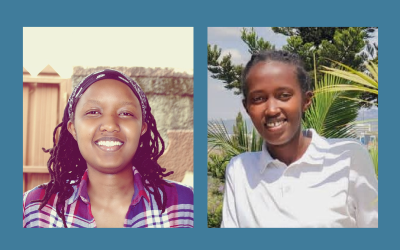Our experience of conducting remote data collection

Since the beginning of the COVID-19 pandemic, many people across many sectors have had to shift to conducting various activities remotely. For us youth researchers in Rwanda, we have had to conduct data collection for the Voices of Refugee Youth project remotely and experience both the positive and negative effects of the pandemic on research. In this blog, we will outline our experience of remote data collection for the second data point (DP2) of the research study.
One thing we enjoyed the most about collecting data remotely was the ease of setting up appointments with the participants. We found it easier to arrange a time for a phone call than arranging a meet-up in-person at a particular location. This also meant that we could even talk in the evenings depending on the participants’ availability.
Moreover, remote data collection enabled us to access participants who were not located in Kigali for various reasons. We were able to talk to those who got jobs outside Kigali, and those who returned home after graduation. In addition, it took less time overall in comparison with face-to-face data collection.
Although collecting data remotely was helpful, it also had negative sides. The most difficult thing was ensuring the participants would answer our phone calls. Participants could refuse to pick up the phone call even after our initial contact and agreement on a time for a call because they were not interested anymore. It is often the case that we heard from their friends that they had changed their minds and were no longer interested in participating in the data collection. After calling their phones three times to ensure that they had refused to participate, we had to fill out forms saying that the participants were not interested in the data collection.
Another issue was that it was so hard for us to know if the participant was honest or not. This is because when conducting a face-to-face data collection, you can make better judgement based on the participant’s facial expressions that he/she is honest in what they are saying and this was not possible in a phone interview.
Moreover, it was very difficult to arrange focus group discussions because participants had different schedules. This made scheduling tricky because we had to make sure that we met all participants at the same time. Internet quality could make things hard because we could restart a call several times.
In comparison to DP1 (the first data collection point, before Covid-19), DP2 (after Covid-19) felt like a much bigger project. Collecting data remotely was not easy because many people were less talkative during phone calls. Participants found it demanding to hear, at the end of a survey, that there was going to be another key informant interview or focus group discussion. Some of them helped us with the surveys and refused to continue in other parts of DP2.
A piece of advice that we would like to give to anyone else doing remote data collection is that they have to be flexible and patient. This will help the most when the participants do not seem to be interested in the data collection. It takes time to make participants at ease so that they feel comfortable to respond to the questions. While it is difficult to avoid some of the other aspects of remote data collection, we found that being flexible and patient was an important way to make a success of this approach.
